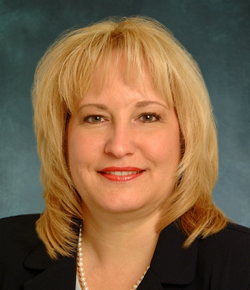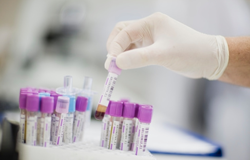Emory Healthcare Information Services


Dee Cantrell is the Chief Information Officer at Emory Healthcare, Inc. in Atlanta, GA. Emory Healthcare is a large integrated academic healthcare system committed to the highest level of care for patients and families, educating healthcare professionals for the future, pursuing discovery research and clinical innovation and serving the community. As the clinical arm of the Woodruff Health Sciences Center of Emory University, Emory Healthcare is the largest, most comprehensive health care system in the state of Georgia.
The world around us is dramatically changing, especially as it relates to healthcare. In order to keep Emory Healthcare (EHC) a viable health care organization and a strong academic medical system for the next 20-30 years, EHC has taken many strategic actions to respond to market forces.
Emory Healthcare Information Services (EHC-IS) has made it possible for substantial accomplishments during FY11 against a very difficult backdrop of a rapidly changing healthcare environment, with changes from health reform, market consolidation, and a weak economy. Below are just some of the accomplishments that EHC-IS has made possible over the last fiscal year.
Meaningful Use
The Federal Government has set Meaningful Use requirements to enable significant health improvements through the electronic medical record. EHC implemented substantial system and workflow changes to qualify Emory University Hospital/Emory University Orthopedic and Spine Hospital, Emory University Hospital Midtown and Wesley Woods Hospital for Year 1 of Stage 1 incentive dollars. In addition, to move TEC toward meeting Stage 1, TEC has achieved wider spread adoption of e-prescribing and is improving the compliance of PQRS participation.
An infrastructure to allow health information exchange (HIE) between EHC and other facilities has been implemented in FY11, which will enable EHC to be an early participant in the Georgia HIE and to exchange clinical data with referring providers. EHC was once again recognized in the 2011 annual American Hospital Association's "Most Wired Survey," one of only 154 organizations to receive this honor. In addition, US News & World Report named EUH, EUHM, and EUOSH as three of only 118 institutions as "Most Connected Hospitals."
 Global Patient Registration (GPR)
Global Patient Registration (GPR)
While EHC has a single electronic medical record, EeMR, there are still multiple financial systems, which caused the need for patients to register multiple times and led to patient dissatisfaction. Global Patient Registration (GPR) was implemented system-wide in March 2011. GPR is a single-access point system for all patient registration information. This system was one of the largest and most complex deployments undertaken at EHC. The implementation directly impacted over 3,500 users and required changes to nine different information technology systems. Three hundred and forty Application Content Experts were placed throughout EHC, along with a 70-member cross-functional team, to provide support and resources during the implementation. Implementing GPR sped up registration, eliminated duplication of administrative, improved data quality, and increased patient safety.
The GPR is a foundation that provides the ability to deploy other solutions to improve patient access, such as check-in kiosks, online referring provider portals, and a web site for patients to view results.
PowerNote Implementations
EHC continues the transition toward being completely paperless with its EeMR. In May and June 2011, the electronic documentation system PowerNote was successfully implemented house-wide at Emory University Hospital (EUH) and Emory University Hospital Midtown (EUHM). Online documentation replaces written history and physicals (H&Ps), progress notes, consultations, and certain discharge documents. PowerNote allows the user to integrate lab results in a standardized format, ensures that all notes are legible and in one central location, and provides real-time access to information from any location that has access to PowerChart.
Patient-Centered Medical Home Pilot
In July 2011, EHC initiated a patient-centered medical home pilot on Clifton Campus with Emory University and EHC employees as initial customers, in partnership with Aetna. In addition to a focus on primary care, the medical home will treat patients with depression, diabetes, congestive heart failure, and asthma. A multi-disciplinary team will provide care with patients and family central to the team. The medical home pilot is an initial step toward changing healthcare delivery models to provide accountable care.
 Emory Johns Creek Hospital (EJCH)
Emory Johns Creek Hospital (EJCH)
On February 28, 2011, HCA took full ownership of Eastside Medical Center, and EHC assumed full ownership of EJCH. EHC has been engaged in various transition activities, such as on-boarding all 670 EJCH employees into the EHC system. EJCH continues to grow; in FY11, the facility experienced record volume in deliveries, cardiac cathertizations, ED visits, and outpatient visits.
 Saint Joseph's Hospital of Atlanta (SJA) Joint Operating Company
Saint Joseph's Hospital of Atlanta (SJA) Joint Operating Company
On March 11, 2011, EHC and SJA announced the formation of a Joint Operating Company (JOC) between the two health systems. This partnership is a strategic opportunity to join the strengths of both organizations, expand services, and improve the delivery of health care to the Atlanta community. EHC and SJA are working together to optimize transfers between Emory Hospitals and SJA to increase community access to critical care beds.
Clinical Integration Network (CIN)
EHC designed a CIN to be implemented in FY12. This network is primarily intended to improve quality and operational performance, but will also increase physician engagement. Physicians and hospitals will become better aligned in CINs to significantly influence overall performance. As an added benefit, a larger contingent of physicians across the market will practice higher quality medicine. The CIN creates a unifying force within the medical staff and will help broaden EHC's brand. Many physician practices desire stronger affiliations with large provider systems. The CIN provides options for EHC and physicians practices to respond to changes from health reform and other market dynamics.
Emory Specialty Associates (ESA)
As part of a focused effort to build volumes and establish new patient markets in a consolidating physician arena, acquisition proposals were approved in FY11 by Emory governance for the acquisition of six practices comprised of 24 physicians plus a multi-specialty ambulatory surgery center. These practices are located in Newton County (two internal medicine), La Grange (orthopaedics), and EJCH markets (primary care and obstetrics). These practices will be established under the Emory brand by the end of FY11.
Programs and Processes
The Re-hospitalization Prevention Program includes several initiatives, including the Transition Manager Program, the Depart Process, Electronic Risk Assessment Tool (ERAT), and a care coordination partnership pilot. EHC-IS is an active partner in all of these initiatives which are described below.
Transition Manager Program - The Transition Manager Program was fully implemented in FY11. There are currently twelve transition managers, six each at EUH and EUHM across six targeted service lines, and a director of the program. The transition managers have strengthened the coordination and communication among the interdisciplinary team caring for patients, to ensure a smooth transition of care and to resolve issues prior to discharge. Communication tools and educational material for patients and families have been created to assist after discharge. New methods of tracking and evaluating causes for readmissions have been implemented, including the Transition Manager dashboard, to prevent future occurrences of readmissions. Since this program has been implemented, outcomes have improved for those patients served by transition managers.
Depart Process - The Hospital-Wide Discharge Process, also known as the Depart Process, was deployed in FY11. The Depart Process is a standardized procedure for discharging patients from the inpatient setting, utilizing EeMR to improve the reliability of the discharge process.
Electronic Risk Assessment Tool (ERAT) - ERAT was implemented in FY11. This tool is intended to help social workers and hospital personnel quickly identify and assess high risk patients who are readmitted within 30 days of previous discharge. If the patient is only readmitted for a short stay and is identified quickly, the admission can be classified as an outpatient observation, if specific criteria are met.
Care Coordination Partnership Pilot - Another EHC Re-hospitalization Prevention Program initiative is a care coordination partnership pilot started in FY11 with two community home health agencies, Visiting Nurse Health System and Amedisys Home Health Services. The goals of this pilot are reduction in readmissions and increased patient satisfaction. The pilot incorporated a risk assessment and care transition principles to improve coordination of care across settings and the process for patient self management of chronic disease. The transition managers at Emory Hospitals work with the partner home health agencies to ensure a smooth transition from hospital to home. Identification of community resources for the patient has improved along with increased utilization of tele-health and tele-monitoring. The care coordination partnership pilot has since been expanded with the Visiting Nurse Health System.
 Pathnet Millenium Implementation
Pathnet Millenium Implementation
In May 2011, EHC started its migration to the Pathnet Millenium laboratory system by implementing CoPath, an Anatomic Pathology application. Benefits of this application include easier-to-read patient report formats, improved workflow to increase turn-around times, more current tracking of specimen status, and more precise retrieval of results. EHC is currently in the planning phase for the full Pathnet Millenium implementation.
Clinical Excellence Executive Oversight Committees (CEEOCs)
The Quality Improvement Acceleration Team was introduced in FY10 and continues to work on EHC-wide quality efforts. To focus improvements on individual entities, CEEOCs were formed in FY11 at EUH and EUHM to build accountability and accelerate progress on quality results. The CEEOCs are chaired by each hospital's Chief Operating Officer and meet weekly to review progress on quality measures. This focused effort on quality has resulted in dramatic progress in the UHC national rankings, where, in this year's rankings, EUH/EUOSH ranked 10th and EUHM ranked 11th out of more than 100 leading teaching hospitals! Last year, EUH ranked 45th and EUHM ranked 42nd.
Hospice Units at EUH and EUHM
Hospice units were opened at EUH and EUHM in November 2010, in partnership with Vistacare Hospice. EUH has an eight bed unit with EUHM having six beds. While EHC excelled at quaternary care, the organization recognized the need to improve end-of-life care. The Hospice provides needed support for patients and families and ensures a smoother transition for patients and families in appropriate end-of-life environment. EUH and EUHM have received positive feedback from patients and families regarding improved end-of-life experience and setting. Discharges to the hospice units have increased by 59% since opening the units.
TEC's Patient Access Initiative
Patient access was expanded in FY11 through efforts by TEC's Patient Access initiative. Standards were developed for same or next day access for "green light" internal-to-Emory and key referring physician’s patients. Standard appointment and check-in times were defined and scripted across TEC. A pilot was initiated that allows TEC's primary care to directly schedule into dermatology and urology provider schedules, which is the first step toward direct inter-disciplinary scheduling. In addition, a pilot was launched to streamline the process for internal consult referrals to ensure ready access for urgent and elective requests.
Three sections successfully redesigned their master scheduling, and four sections piloted centralization of master schedule management. The surgery groups and breast imaging consolidated call centers into a central location. The call centers were improved by implementing a Call Disposition Tool, instituting a new quality program targeting how agents interact with patients, and installing a status screen to alert agents on the number of patients in the call queue. By fiscal year end, TEC will have completed evaluations of the various pilot efforts, worked toward standardizing scripts around access standards, and further reduced access lag time for key referring physician groups.
 Clinical Trials Checklist
Clinical Trials Checklist
EHC's Office of Quality and Risk developed the Clinical Trials Checklist. The purpose of the Checklist is to ensure that key stakeholders sign off to validate that the appropriate preparations have been completed prior to the enrollment of patients in a clinical trial. The Checklist was piloted in the Emory Transplant Center and then deployed throughout EHC for all relevant clinical trials after incorporating lessons learned from the pilot. The Checklist requires sign off by administration, nursing, labs, the Investigational Drug Service, information services, and the Office of Clinical Research.
Patient Flow
EHC has focused initiatives to improve the patient flow of its existing facilities. FY11 activities include further deployment of the e-Bed system, consolidation of the transfer system, and improvements in the Emergency Departments (EDs). The EUH and EUHM EDs experienced the following patient flow improvements from FY10 to FYTD11:
- 4.2% decrease in average length of stay for all ED patients
- 7.3% decrease average length of stay for all admitted patients from the ED
- 20% decrease in the medium time to provider
- 17% decrease in left without being seen
 e-Bed Management System
e-Bed Management System
The e-Bed system allows for smoother, more efficient patient flow and increased accuracy, leading to improved patient satisfaction. Approximately 100 e-Bed monitors are in place on units throughout Emory Hospitals. The system provides a real-time view of each unit by using simple color coding to indicate which rooms are available, occupied, or waiting to be cleaned. An enhancement to e-Bed made in March 2011 now assists with core measure compliance.
Through e-Bed, hospital medicine admitters are now automatically notified of a patient bed assignment, which assisted in the successful implementation of SIBR. E-Bed has improved the process for urgent admissions, reducing waiting time for patients in the EUH lobby or in TEC to just under one hour. Overall bed turnaround time has been reduced to an average of 1.5 hours, meeting target, an improvement from the previous time of over 2.5 hours.
Transfer System
Transfer services across EHC have been consolidated into one system that is housed at EUH. The service is facilitating intra-EHC facility transfers to optimize overall EHC capacity. As an example, in March 2011, the transfer center began facilitating transfers from Emory Hospital EDs to WWH. In April 2011, the transfer center started assisting referring physicians with placements at Grady Hospital for trauma or other required services located only at Grady.
The transfer process was improved and standardized by incorporating an interdisciplinary team to determine the appropriateness of each transfer. In addition, the Central Logic Forefront system was implemented in FY11 to monitor and increase transfer volume. The number of patients waiting in the transfer queue for bed availability has decreased by utilizing all available beds within the EHC system. The instances of patients accepted but not arrived have dropped significantly, particularly for reasons of pending bed availability. In FYTD11 to July, Emory Hospitals have received over 8,100 transfers, a significant source of admissions.
Referral Management
Several initiatives were undertaken to strengthen relationships with EHC's referring physicians. The Referral Management Correspondence Center was initiated in May 2011 to ensure reliable, consistent, and timely communication of clinical information and results to referring physicians. The Correspondence Center focuses on the communication of inpatient discharge information, using the Depart Process, to referring providers. The center has also implemented an outpatient pilot with the Lung Transplant department to centralize outpatient clinical communication. An additional activity included a pilot involving four sections that provides a standard process for efficient and accessible internal referrals. Finally, the referral management team continued to develop a provider master database that will accurately capture, maintain, and analyze referring provider data.
Standardized Processes for Clinical Care
EHC continues to move toward appropriate standardization of care. The Center for Critical Care redesigned its critical care delivery model to ensure 24 hour / 7 day a week critical care coverage by intensivists and mid-levels. A new pay and incentive structure was designed and implemented for this care model. The use of the EeMR system also helps ensure appropriate standardization of care. Evidence Based Nursing (EBN), a decision support application within EeMR PowerChart, was implemented in FY11 to provide evidence-based nursing content within the workflow to support clinical decision-making. TEC continues its commitment to provide standardized care across sections and providers to improve the patient and family experience along with creating a more efficient workflow. In FY11, TEC has worked to define one:
- Universal electronic patient intake form and process
- Script for registration, check-in, rooming, and check-out
- Standard medication reconciliation process
- Set of vital sign standards
- Timely process to handle clinical calls, call backs, results reporting, and prescription renewals
 ENT Move from EUH and EUHM
ENT Move from EUH and EUHM
ENT services are in the process of moving from Clifton Campus to Midtown, allowing the department to capitalize on available operating room and bed resources at EUHM while reducing redundant costs across Emory Hospitals and TEC. EUHM can grow volume and maximize utilization, while EUH can benefit from freeing operating room time and bed resources to grow other programs. The final phase of the move is scheduled to begin in April 2012.
Adapt and Support
As EHC responds to this changing market, EHC-IS must also adapt and quickly change to support the initiatives and projects. It is important to note that the year ahead will be even more complex and challenging requiring the dedicated focus of EHC-IS in order to meet these complexities and challenges head ahead.
Dee Cantrell
Chief Information Officer, Emory Healthcare Inc. Information Services
"EHC-IS is committed to serving the physicians and will go out of their way to make sure that any issues a physician encounters are resolved with immediate priority. When the St. Joseph's Hospital came on board, many of the EHC-IS staff stayed in hotels near SJH so that they could be on hand for the long hours it took to ensure that the onboarding process was a positive one for the SJH teams."
Felicia Bianchi,
Project Manager III, UTS Project Management Office, OIT